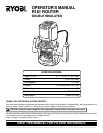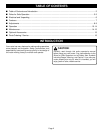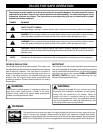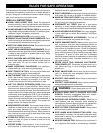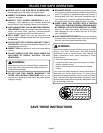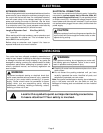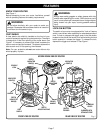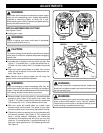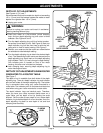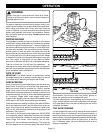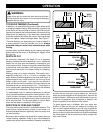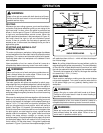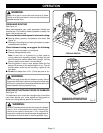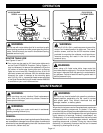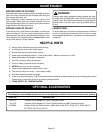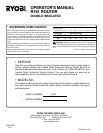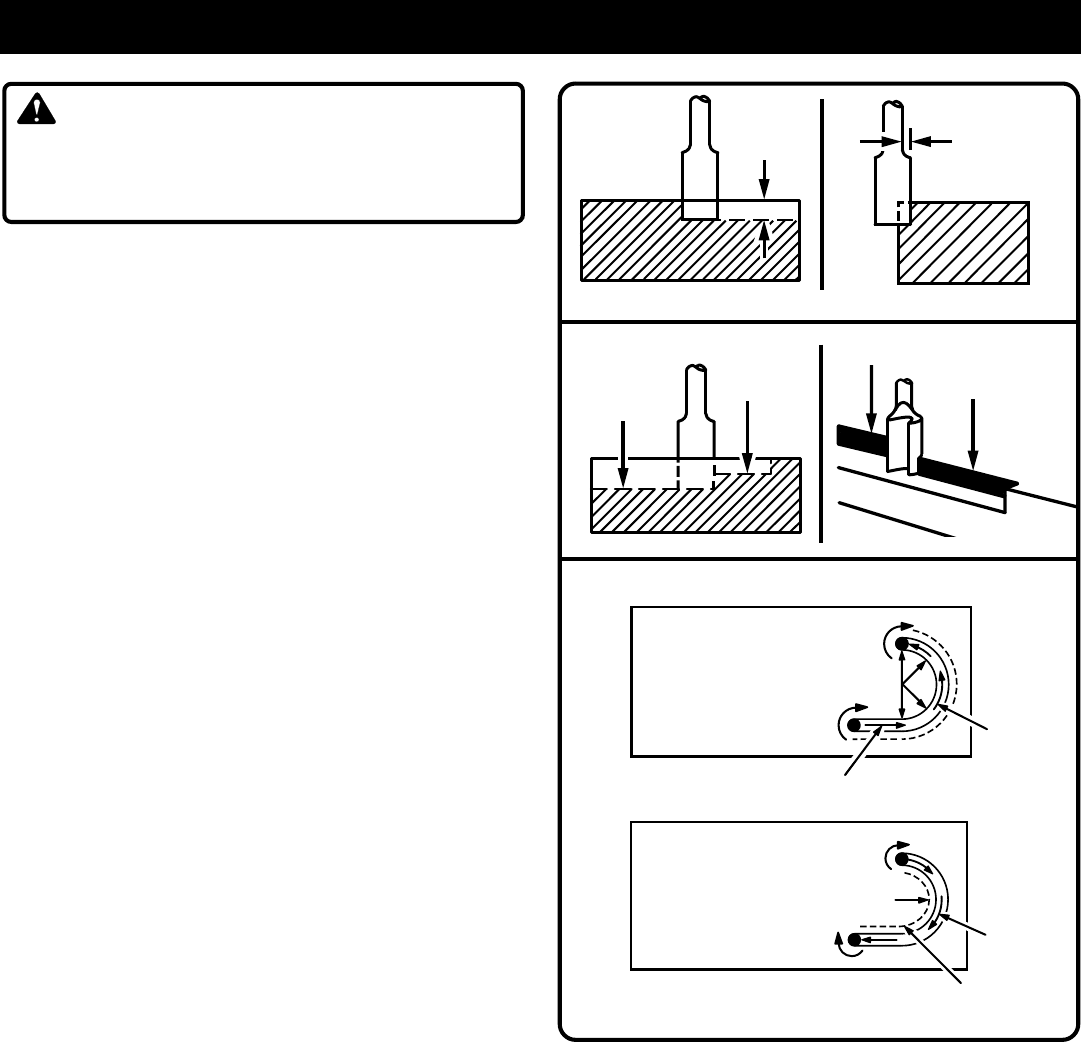
Page 11
OPERATION
Fig. 10
WIDTH
OF CUT
1ST.
PASS
2ND.
PASS
2ND. PASS
1ST. PASS
GUIDE INSIDE
Fig. 12
THRUST
GUIDE
FEED
ROTATION
ROTATION
GUIDE OUTSIDE
DEPTH
OF CUT
Fig. 11
TOO SLOW FEEDING (Continued)
In addition, it is more difficult to control a router when the bit
is scraping instead of cutting. With practically no load on the
motor the bit will be revolving at close to top RPM, and will
have a much greater than normal tendency to bounce off the
sides of the cut (especially, if the wood has a pronounced
grain with hard and soft areas). As a result, the cut produced
may have rippled, instead of straight sides.
See Figure 9.
“Too-slow feeding” can also cause your router to take off in
a wrong direction from the intended line of cut. Always
grasp and hold your router firmly with both hands when
routing.
You can detect “too-slow feeding” by the runaway too-highly
pitched sound of the motor; or by feeling the “wiggle” of the
bit in the cut.
DEPTH OF CUT
As previously mentioned, the depth of cut is important
because it affects the rate of feed which, in turn, affects the
quality of a cut (and, also, the possibility of damage to your
router motor and bit). A deep cut requires a slower feed than
a shallow one, and a too deep cut will cause you to slow the
feed so much that the bit is no longer cutting, it is scraping,
instead.
Making a deep cut is never advisable. The smaller bits—
especially those only 1/16 in. (1.6 mm) in diameter—are
easily broken off when subjected to too much side thrust. A
large enough bit may not be broken off, but if the cut is too
deep a rough cut will result— and it may be very difficult to
guide and control the bit as desired. For these reasons, we
recommend that you do not exceed 1/8 in. (3 mm) depth of
cut in a single pass, regardless of the bit size or the softness
or condition of the workpiece.
See Figure 10.
To make deeper cuts it is therefore necessary to make as
many successive passes as required, lowering the bit 1/8 in.
(3 mm) for each new pass. In order to save time, do all the
cutting necessary at one depth setting, before lowering the
bit for the next pass. This will also assure a uniform depth
when the final pass is completed.
See Figure 11.
DIRECTION OF FEED AND THRUST
The router motor and bit revolve in a clockwise direction. This
gives the tool a slight tendency to twist (in your hands) in a
counterclockwise direction, especially when the motor revs
up (as at starting).
Because of the extremely high speed of bit rotation during a
“proper feeding” operation, there is very little kickback to
contend with under normal conditions. However, should the
WARNING:
Keep a firm grip on router with both hands at all times.
Failure to do so could result in loss of control leading to
possible serious injury.
bit strike a knot, hard grain, foreign object, etc. that would
affect the normal progress of the cutting action, there will be
a slight kickback—sufficient to spoil the trueness of your cut
if you are not prepared. Such a kickback is always in the
direction opposite to the direction of bit rotation.
To guard against such a kickback, plan your setup and
direction of feed so that you will always be thrusting the
tool—to hold it against whatever you are using to guide the
cut—in the same direction that the leading edge of the bit is
moving. In short, the thrust should be in a direction that keeps
the sharp edges of the bit continuously biting straight into
new (uncut) wood.
THRUST
GUIDE
ROTATION
FEED



